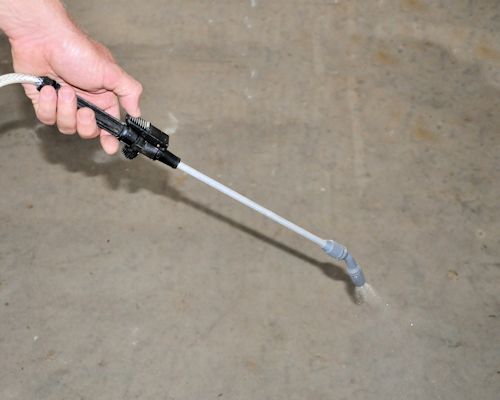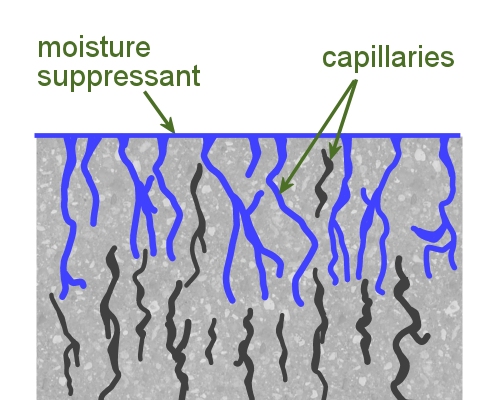Applying moisture suppressants
 Audio for slide 1 (mp3 |6|KB)
Audio for slide 1 (mp3 |6|KB)
Moisture suppressants are mostly used to 'fast track' a floor covering installation when the concrete is still green and has not yet reached an acceptable RH level.
They're not designed to provide the same level of protection as a full moisture barrier.
Most moisture suppressants are water-based products that can be applied with a roller, brush or sprayer.
When a sprayer is used, several passes are applied until the area is evenly saturated. Then the excess material in the low spots is spread with a broom to the high spots.

They're not designed to provide the same level of protection as a full moisture barrier.
Most moisture suppressants are water-based products that can be applied with a roller, brush or sprayer.
When a sprayer is used, several passes are applied until the area is evenly saturated. Then the excess material in the low spots is spread with a broom to the high spots.

 Audio for slide 2 (mp3 |6|KB)
Audio for slide 2 (mp3 |6|KB)
As the concrete pores fill up, any contaminants trapped inside the pores will tend to float to the surface. So the concrete needs to be sanded and vacuumed 24 hours after the suppressant is applied to remove the residual chemicals and substances.
As with moisture barriers, you must carry expansion joints through to the finished floor height. These are typically filled with a jointing system made from polyurethane, silicone or epoxy resin.

As with moisture barriers, you must carry expansion joints through to the finished floor height. These are typically filled with a jointing system made from polyurethane, silicone or epoxy resin.


Learning activity
Audio 3 (mp3 |6|KB)Below is a link to a video clip demonstrating the installation of Protect Crete 'Moisture fix' concrete moisture barrier.
Although this product provides a fully waterproof membrane, it shows a simple application technique which can also be used for moisture suppressants.
Watch the clip and then describe the process used and equipment required to spread the product.

 Go to Assignment
Go to Assignment